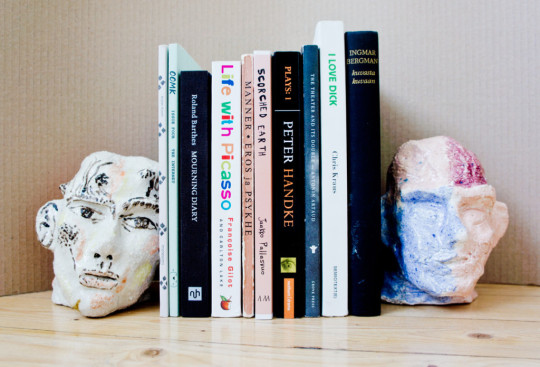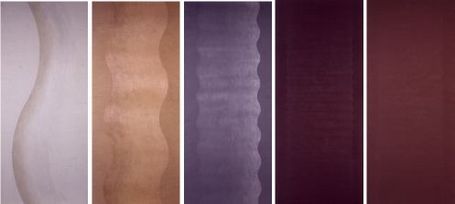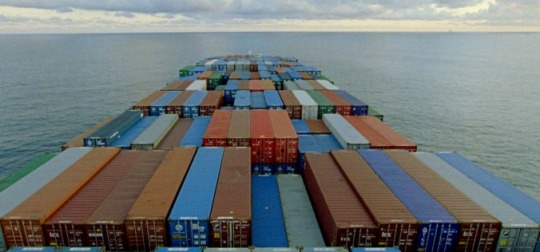Lynda Benglis, New Museum installation views, 2011.Saelan Twerdy. Freelance art writer, Montreal editor at Momus, Art History PhD at McGill. Studying "dematerialization" in art since the 1960s, especially in relation to information technology and shifting labour relations.
Don't wanna be here? Send us removal request.
Link
17 notes
·
View notes
Link
This microblog is now what the Japanese apparently call an “ishikoro,” or pebble -- a neglected site.
3 notes
·
View notes
Link
Returning to this disused tumblr to promote my latest piece of writing: a long essay on the Montreal Museum of Contemporary Art’s Edmund Alleyn retrospective, which I've been working on for a while now. Mark Lanctôt did a really fantastic job curating this exhibition and I've enjoyed spending time with it.
This piece is actually the first time I've ever written anything substantial about a painter -- bit ironic, given that I have the privilege of being on the RBC Prize jury this year. It's also the first time that the MAC has presented a major show on a deceased artist (aside from a couple of occasions in which an artist was living when a show was initiated and passed away during or shortly after the preparations). I think it's particularly interesting as a historical show, and I try to reflect here on what it means for an artist to be "historical" and "contemporary" at the same time.
#saelan twerdy#macmtl#montreal#edmund alleyn#quebec#contemporary art#Canadian art#painting#contemporary painting#Quiet Revolution#Momus
8 notes
·
View notes
Link
A review of what sounds like a fascinating book by the estimable Walter Benn Michaels, though I am fairly sure that I disagree with Michaels w/r/t his position on artistic autonomy.
5 notes
·
View notes
Link
2 notes
·
View notes
Text
Just came across this question I asked Christopher Schreck three years ago and his answers still seem very relevant. Still thinking about the same things.
Formalism, Abstraction, Materiality
christopherschreck answered you:
Here’s a really broad question for you. It seems to me that lot of the most exciting new work today in pretty much all mediums (ie. most of what you cover on this blog) is driven by a combination of formalism, abstraction, and materiality. A) Would you agree? B) Why do you think this is?
towerofsleep
hey bud
lets figure it out together!
there’s probably a lot of different reasons. i’ll throw out the first one that comes to mind. which is that it has a lot to do with the current predominance of the digital (as means of creating work, of presenting work, of disseminating work, of viewing work, of intervening with/altering work).
in terms of formalism/materiality, my sense is that the non-physicality of the digital world has to lead to the reassessment of all media rooted in the physical world. it’s about redefining and reframing, but also, maybe, about reminding/reassuring ourselves that things - and we - do actually physically exist??
a) painting’s been perpetually “dead” or “in crisis” or whatever for decades, but with the rise of the digital, painters finally have a legitimate cause/purpose, an idea to work off of. it’s true not only for the frame and canvas painters, but also the increasing number of artists creating paintings using programs on computers and phones. i think it can be viewed as a reaction against or interaction with the current circumstances. could be both.
b) same with sculpture - also interesting to think about the implications of the jpeg as primary means of presenting/viewing sculptures - the framing/backdrops/alterations done in post… it not only gives artists complete control over how the work is presented (at least initially, before it’s fair game for anyone to alter/recontextualize), but id argue actually creates a weird blended genre of painting and photography. (then, if you get someone like ben schumacher or artie vierkant, who leave obvious digital alterations to the documentation shots, you get another nice layer going.)
c) photo’s the same thing - photo as a medium was always defined not by its equipment, not even the process, but ultimately the print itself. with digital cameras, processes, and presentations, it’s all up for reassessment. some people embrace the digital - use DSLRs, alter their work in post, etc. - others emphasize the physical - people like letha wilson making sculptures out of the prints themselves, etc. you also get people working with their hands more, shooting still-lifes and sculptural elements to then be shot.
d) net art/digital art is also all about materiality - it’s more about assessment than re-assessment for them, but it’s still about exploring the territory
as far as abstraction goes… i’d say three things:
a) its a little safer, less self-conscious, less specific so there’s less to own up to
b) when everything you put on line can and will be altered/recontextualized, there’s something maybe more comfortable about putting out work that doesnt have much in the way of explicit content to be altered
c) abstract work is fun to make and fun to look at. we’re so post-everything that people dont get hung up on the metaphysical implications of abstract expressionism, the conceptual framework of minimalism, etc. - it’s a lot more about appearance, which sounds superficial but which i actually completely embrace because in all honesty i think its more important that a work be visually exciting than intellectually compelling. obviously, id like it to be both if possible, but personally i’d rather feel, then ponder… if given the ultimatum, i’d rather feel THAN ponder! maybe some people feel the same way.
20 notes
·
View notes
Link
3 notes
·
View notes
Link
8 notes
·
View notes
Text
we spent several decades and trillions of dollars promoting aggressive individualism because we were scared of communism and now we act surprised when young people seem self-absorbed
2K notes
·
View notes
Link
I wrote about my favourite books of 2015 for the Drawn & Quarterly store blog.
2 notes
·
View notes
Photo

“The text is not the work”, insists one of Scorched Earth’s fifteen “Works”. Neither is the artwork the life that’s led; one made up of fragments filtered through a body that is odd looking, neurotic, fat, fictionalised (“either a man or a woman or then not”). Here, the online and the offline are indistinguishable, the internet is the IRL, the image, the reality. Nominating himself a kind of Saviour come to reclaim poor Post-Internet (“I want what no one else wants”) Pallasvuo disavows any idea of authenticity: “isn’t it more authentic to be inauthentic than authentic if you’re inauthentic at heart?”
Purporting to a rejection of authenticity while finding it by the very act of that rejection is as far as the irony goes, though. There’s no distance in Scorched Earth. It recognises the absurdity of its own position as a book about the art world by a persona who doesn’t feel a part of it, but also actually is.
(via Jaakko Pallasvuo’s 'Scorched Earth' reviewed | atractivoquenobello)
2 notes
·
View notes
Link
<3
3 notes
·
View notes
Photo

Left to right: Lee Lozano, 2-Wave, 1968 . Lee Lozano, 6-Wave, 1970. Lee Lozano, 16-Wave,1969. Lee Lozano, 24-Wave, 1969. Lee Lozano, 32-Wave, 1969. All oil on canvas, 96 x 42". From the series “Wave,” 1967–70.
MAKING WAVES: THE LEGACY OF LEE LOZANO by Katy Siegel talks with David Reed (2001)
14 notes
·
View notes
Photo
yes it is!

“How to See Infrastructure: A Guide for Seven Billion Primates” | Rhizome
Our studies of infrastructure must do what infrastructure itself has failed to do, creating situated knowledges that teach us what is underneath our society, rather than simply metering information as commodity through more optic tubes. We do not need a snatching away of the shroud, a techno-monster captured and paraded on stage. Not like an animal or person harnessed to a profit-generating machine. Not a big board of big data, constantly tweaked by a wizard’s wand. But a description of what the shroud is doing, and why it is there. To discover who it is hiding, why, and how they came to be there. The efforts of researchers and artists to discover what is going on with our infrastructure is not about commanding god-like powers, but about speaking with the spirits, wherever they chose to haunt us.
this is excellent
49 notes
·
View notes
Link
Fiona Duncan wrote three essays and put together a talk and the whole thing is integrated with a bunch of stuff by artists. The platform works SUPER well and the writing is incredible. Essential. So good. I feel like this is the thing everybody is trying to do.
17 notes
·
View notes